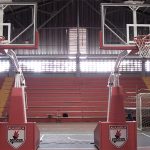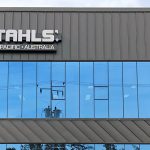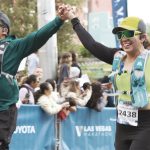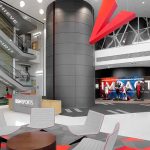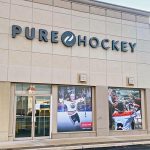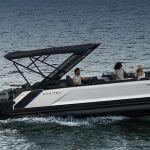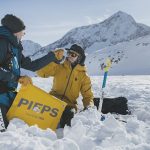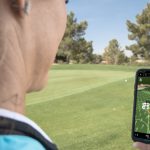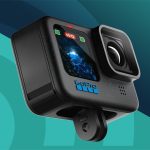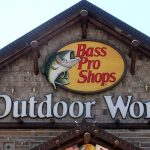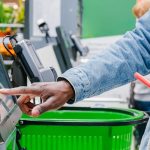Hibbett Sports, Inc. reported fourth-quarter earnings that came in at the lower-end of expectations and also offered a 2014 outlook that trailed Wall Street’s projections.
Earnings in the fourth quarter declined 12.9 percent to $16.9 million, or 64 cents a share. Earnings comparisons were hurt by the extra week in the 2012 quarter, which benefited the year-ago period by 7 cents a share. But earnings came in at the lower-end of management’s range of 62 to 71 cents a share given while reporting third-quarter results. They also came in short of Wall Street’s consensus estimate of 70 cents a share.
Revenues inched up 0.2 percent to $217.8 million. The extra week contributed approximately $12 million in additional sales to last year's fourth quarter. Comparable store sales increased 1.7 percent on a calendar basis (comparable 13-week period).
“Though the quarter comp result was on the lower end of expectations, we were relatively pleased with our overall holiday sales and current quarter-to-date trend,” said Jeff Rosenthal, president and CEO, on a conference call with analysts.
Comps were up 5.1 percent in November and gained 4.3 percent in December before tumbling 9.8 percent in January due to “significant headwinds” related to the University of Alabama not playing in the BCS championship, as well as significant weather-related closures. In the month of January, almost two complete days of sales were lost due to the closures. With weather patterns normalizing and spring assortments arriving, current quarter-to-date sales have bounced back nicely with a high mid-single comp.
Becky Jones, SVP merchandising, said the top-line divers in the quarter were branded active apparel, accessories, and footwear.
Branded activewear delivered a high single-digit comp overall, led by double-digit growth in men's and youth categories. Fleece tops, pants, and jackets from Nike and Under Armour were highlights. Pants are being seen as a growth opportunity in both women and men's areas going forward. In its fashion business, Jordan and Levi are standing out.
Licensed apparel had a “difficult quarter” with the volume of Florida State, the BCS winter, “quite low compared to past national championship special events.” Headwear also impacted the licensed category negatively. On the positive side, NBA product saw a high single-digit comp, led by Oklahoma Thunder merchandise.
Footwear was driven primarily by basketball, with Jordan “being the clear standout,” said Jones. Signature Nike basketball products such as Lebron and KD “was also very good,” she added.
Lifestyle footwear was challenged due to the “meaningful customer shift” towards basketball. Kids footwear “produced nice results for the quarter as well, again with basketball being the top category,” added Jones.
Running in all areas was also described as “challenging.” Nike Free running continued to perform well in adult sizes and Under Armour running is beginning to take share but tech running overall “has been soft,” said Jones.
Cleats were down slightly in total, with baseball and football being the softest areas. Volleyball, wrestling, and softball cleats were strong performers.
Equipment was down marginally although positive results were seen for football protective gear, sports medicine, and inflatables. Lebron and KD basketballs were particularly strong. Weakness came from baseball, softball, and fitness. Hibbett is seeing print and color become more important in the baseball and softball areas with spring’s offerings.
The accessory division saw a mid single-digit comp, driven by branded headwear and fashion socks.
Hibbett’s profit rate in the quarter decreased 30 basis points in the quarter, to 35.8 percent. Product margin decreased 9 basis points, mainly due to markdowns associated with inventory management. Warehouse and store occupancy increased 21 basis points as a percent of sales, mainly due to the extra week in the quarter last year.
SG&A increased 139 basis points as a percent of sales to 21.7 percent, which was partially due to the extra week in the fiscal calendar last year. Increases were also seen in benefit cost, new store costs, and costs associated with its new corporate office. Store labor and benefits deleveraged significantly in January due to the shortfall in sales.
For the full year, sales increased 4.1 percent to $852.0 million with comparable store sales increasing 1.8 percent on a calendar basis. Net income was down 2.3 percent to $70.9 million, to $2.70 a share.
Hibbett closed 18 stores and opened 72 for a net total of 54 stores in 2013, ending with 927 for the year. It expects to open at least net 65 additional stores this year and net over 1,300 stores by fiscal year 2019.
Looking ahead for the current year, Hibbett expects EPS to be in the range of $2.78 to $2.98 representing a gain of 3.0 to 10.0 percent. Analysts had projected earnings per share of $3.05. Comparable store sales are expected to increase in the low-to-mid single digit range with a flat to slightly positive product gross margin rate.
Rosenthal said markdown optimization has been rolled out to 57 percent of stores and touted the “discipline it's putting in place when it comes to managing end-of-season clearance.” The technology is expected to be completely rolled out by the end of the year.
The transition to its new wholesale logistics facility is expected to begin in April and also be completely by the end of the year. Said Rosenthal, “The new facility should dramatically improve our supply chain efficiencies and allow us to get right products to the right stores quicker than ever before.”
Hibbett is also having conversations with consultants around adding e-commerce as part of its emerging omnichannel strategy. He described it as a “multiyear project” with no time set for launch.
Regarding current sales trends, the arrival of warmer weather over the last couple weeks has boosted sales of T-shirts and shorts, baseball equipment, cleats and particularly sandals. Said Jones, “All regions are comp positive right now.”

